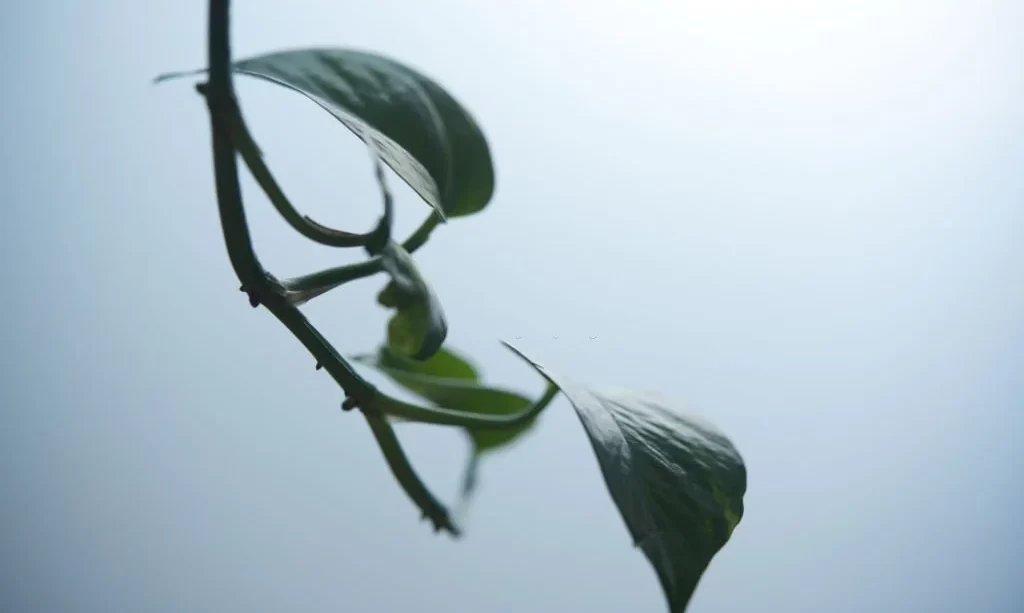Pothos plants, with their lush green foliage and trailing vines, are beloved additions to homes and offices. They are cherished not only for their aesthetic appeal but also for their hardy nature. However, even the most resilient plants like Pothos can encounter issues, and one common concern is drooping leaves. If you’ve ever wondered, “Why is my Pothos droopy?” you’re not alone. In this guide, we will explore the potential culprits behind drooping Pothos leaves, starting with the often-overlooked problem of overwatering.
- 🌱 PERFECT BLEND OF NUTRIENTS – Give your succulent plants everything they need to grow up healthy! Our 3-1-2 liquid concentrate has all of the essential nutrients that your plants crave.
- 🌱 MIX WITH WATER – Designed to blend with water to provide a single application to use every other watering cycle. 1-2 tsp per 8 cups water.
- 🌱 SUITABLE FOR ALL VARIETIES – You can use our fertilizer on just about any kind of succulent plant. It’s great for seedlings and mature plants alike.
- 🌱 SPECIALLY DESIGNED PREMIUM FORMULA – Special blend enables maximum absorption for plant growth and vitality.
- 🌱 DURABLE PACKAGING – This liquid concentrate comes in a sturdy, 8 oz sealed bottle. Store it in a safe, dry place and you can count on it to stay in great condition for a long time to come.
Overwatering
- Symptoms: Overwatering is a well-known cause of Pothos drooping. Signs include wilting leaves, yellowing, and a general lack of vigor in the plant. It occurs when the roots become waterlogged and can’t access sufficient oxygen.
- Solution: To address overwatering, allow the top inch or two of the soil to dry out before watering your Pothos again. Ensure that your pot has proper drainage to prevent excess water from accumulating at the bottom. Always empty the saucer beneath the pot after watering to avoid waterlogged conditions. Remember that Pothos prefers to be kept slightly on the drier side, so less is often more when it comes to watering this resilient houseplant.
Underwatering
- Symptoms: Another common reason for Pothos plants to droop is underwatering. When the plant doesn’t receive enough moisture, its leaves may become limp and lose their usual turgidity.
- Solution: To combat underwatering, establish a regular watering schedule. Wait until the top inch of soil feels dry to the touch before watering your Pothos. Be consistent with your watering routine but avoid letting the plant sit in standing water. Providing a saucer beneath the pot to catch excess water can help maintain proper moisture levels.
Poor Lighting
- Symptoms: Insufficient light can also lead to drooping Pothos leaves. The plant’s leaves may become leggy, and the vibrant green color may fade.
- Solution: Ensure your Pothos is placed in an area with bright, indirect sunlight. While Pothos can tolerate lower light conditions, it thrives when it receives more light exposure. Avoid direct sunlight, as this can scorch the leaves. Rotating the plant occasionally can help ensure all sides receive adequate light. If natural light is limited, consider supplementing with artificial grow lights to meet the plant’s energy needs.
By addressing these common issues of underwatering and poor lighting, you can help your Pothos regain its vitality and lush appearance. Keep in mind that a little care and attention go a long way in maintaining the health and beauty of your Pothos plant.
Root Bound
- Symptoms: Pothos plants can become root bound when their roots outgrow the current pot. This condition can lead to drooping leaves as the plant struggles to access sufficient nutrients and water.
- Solution: If you suspect your Pothos is root bound, consider repotting it into a slightly larger container with fresh, well-draining potting mix. Gently loosen the roots when transplanting to encourage healthy growth. Repotting provides more space for the roots to expand and can revitalize the plant.
Pest Infestations
- Symptoms: Drooping leaves can also be a response to pest infestations, such as spider mites or mealybugs. These pests can weaken the plant and disrupt its normal growth.
- Solution: Regularly inspect your Pothos for signs of pests, including webbing, discolored leaves, or tiny insects. If you detect any pests, treat the plant promptly with appropriate methods, such as neem oil, insecticidal soap, or a gentle shower to dislodge the pests. Isolate the affected plant to prevent the infestation from spreading to other plants in your collection.
Addressing root-bound conditions and pest infestations is crucial to helping your Pothos regain its health and vibrancy. By identifying and tackling these issues promptly, you can ensure that your Pothos remains a flourishing and attractive addition to your indoor space.
Temperature Stress
- Symptoms: Extreme temperatures, both hot and cold, can stress Pothos plants and lead to drooping leaves. Pothos is sensitive to sudden temperature fluctuations.
- Solution: Maintain a consistent temperature range between 60°F to 70°F (15°C to 24°C) for your Pothos. Avoid placing it near drafty windows, heating vents, or air conditioning units that can subject the plant to temperature extremes. Protect it from cold drafts during the winter and avoid exposing it to direct sunlight, which can cause overheating during the summer. Consistent, moderate temperatures are key to keeping your Pothos healthy and upright.
Conclusion
A drooping Pothos can be a sign that your plant is facing specific challenges, but it’s also a signal that your green companion needs your attention and care. Whether it’s due to overwatering, underwatering, poor lighting, being root-bound, pest infestations, or temperature stress, these issues can be addressed effectively.
By understanding the causes of drooping Pothos leaves and implementing the appropriate solutions, you can nurture your plant back to a vibrant and thriving state. Remember that Pothos is a resilient houseplant, and with proper care, it will reward you with its lush, trailing vines and vibrant green leaves, enhancing the beauty of your indoor space.




